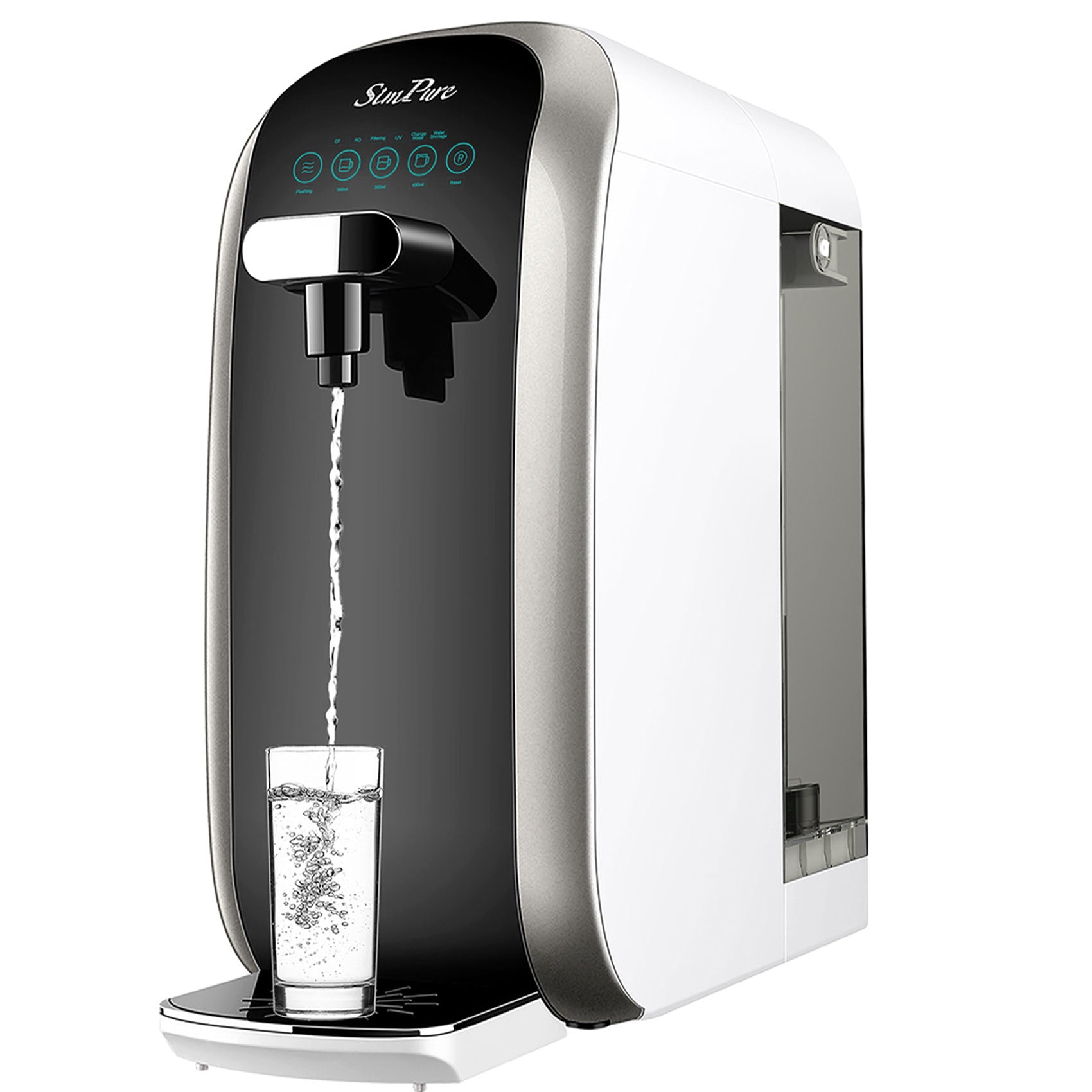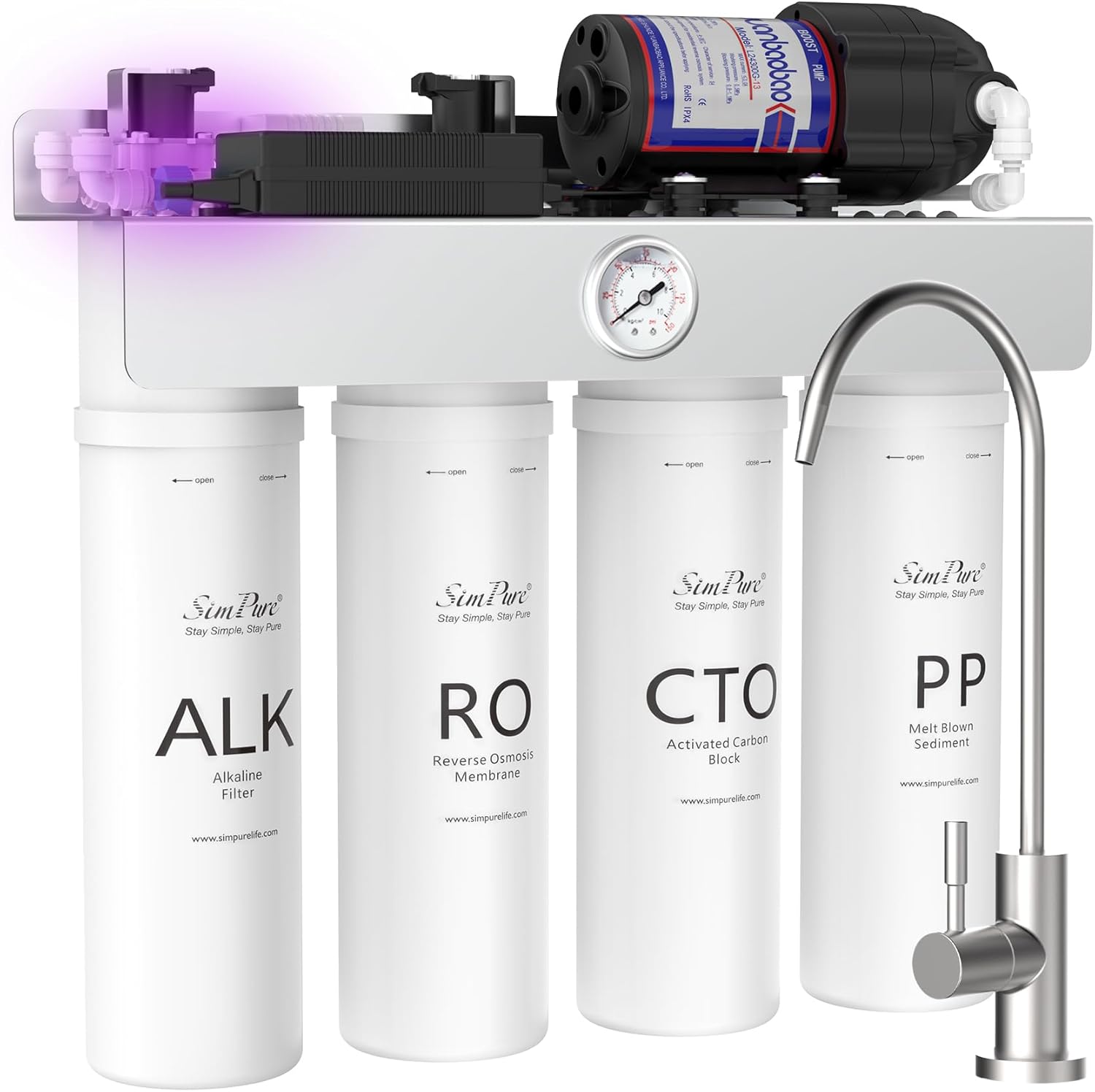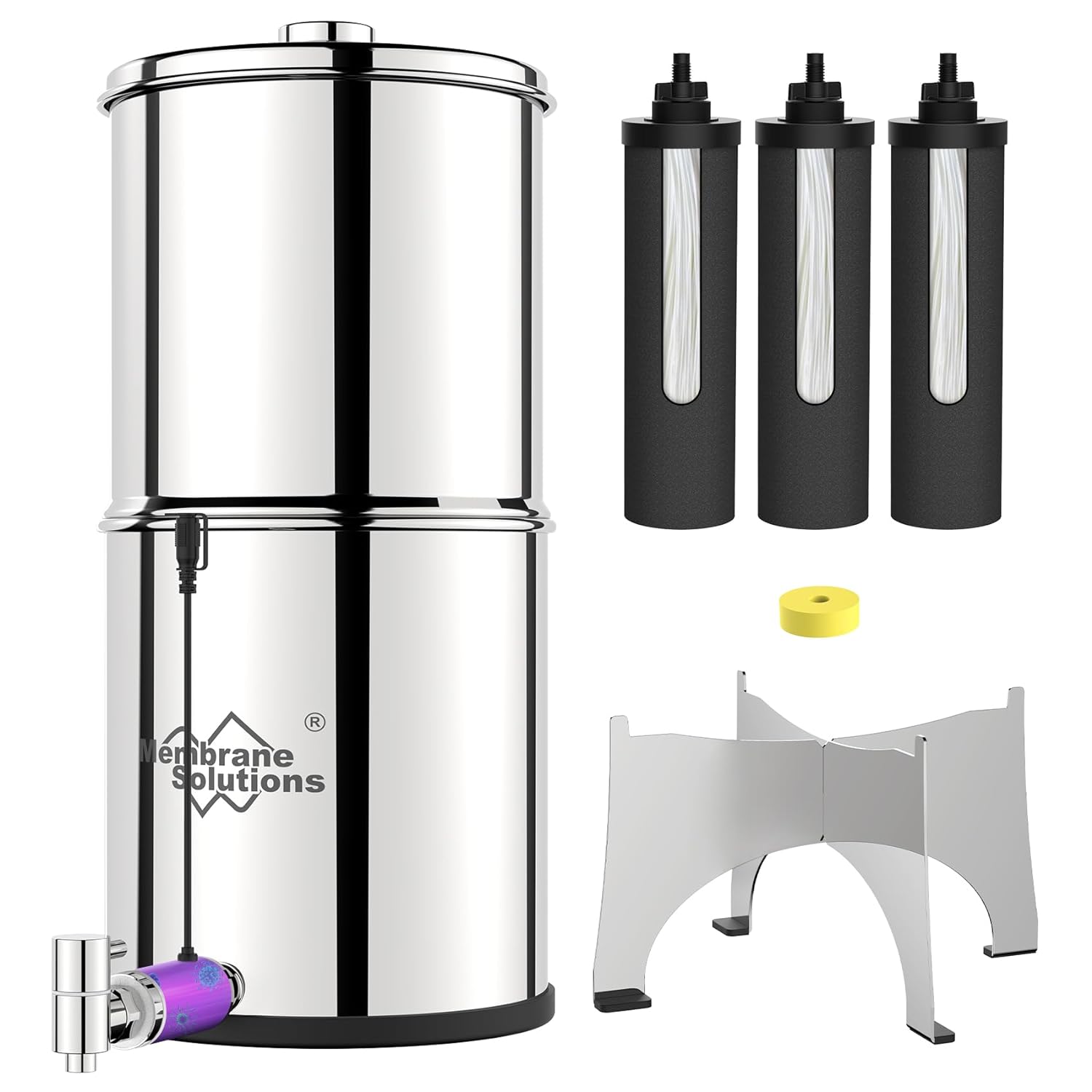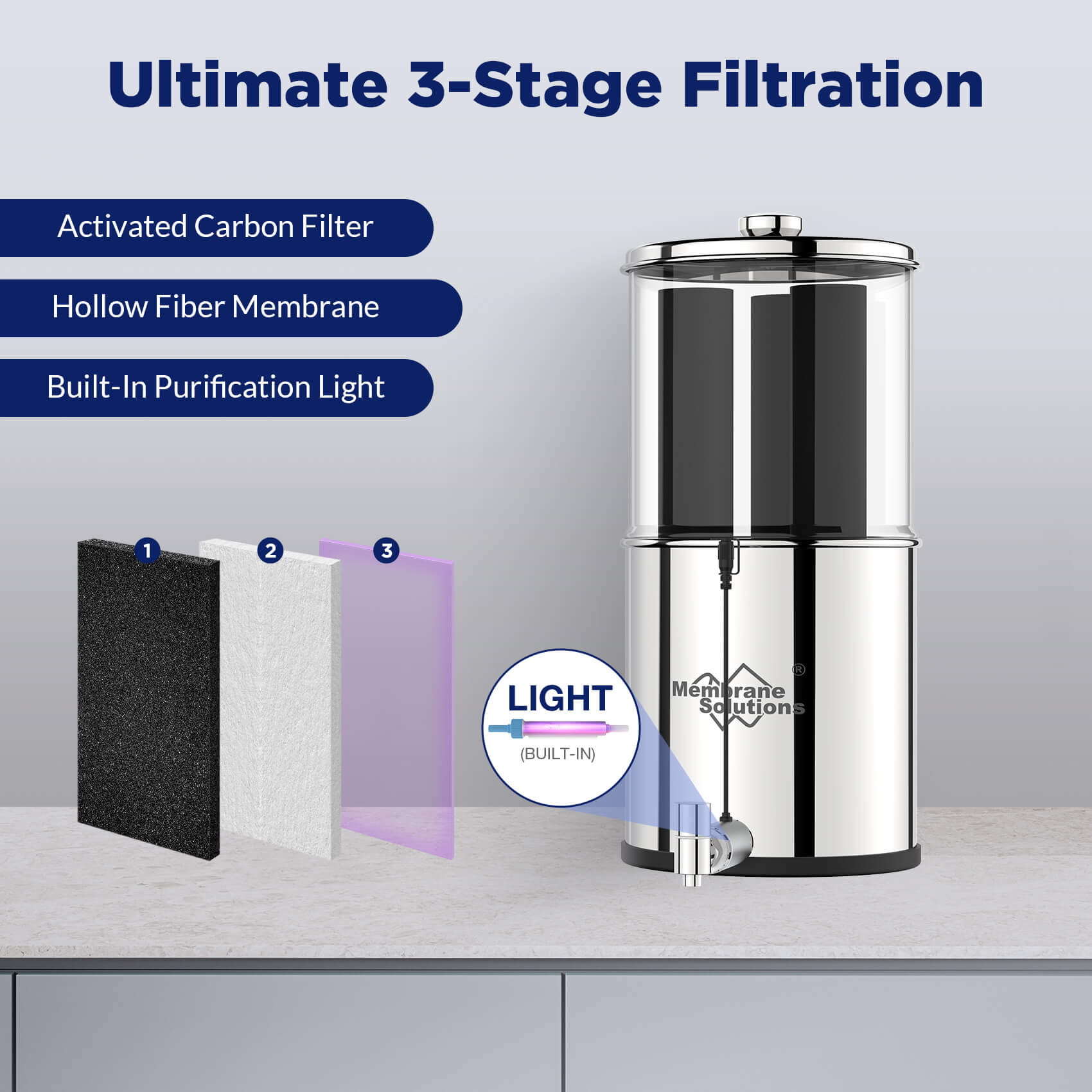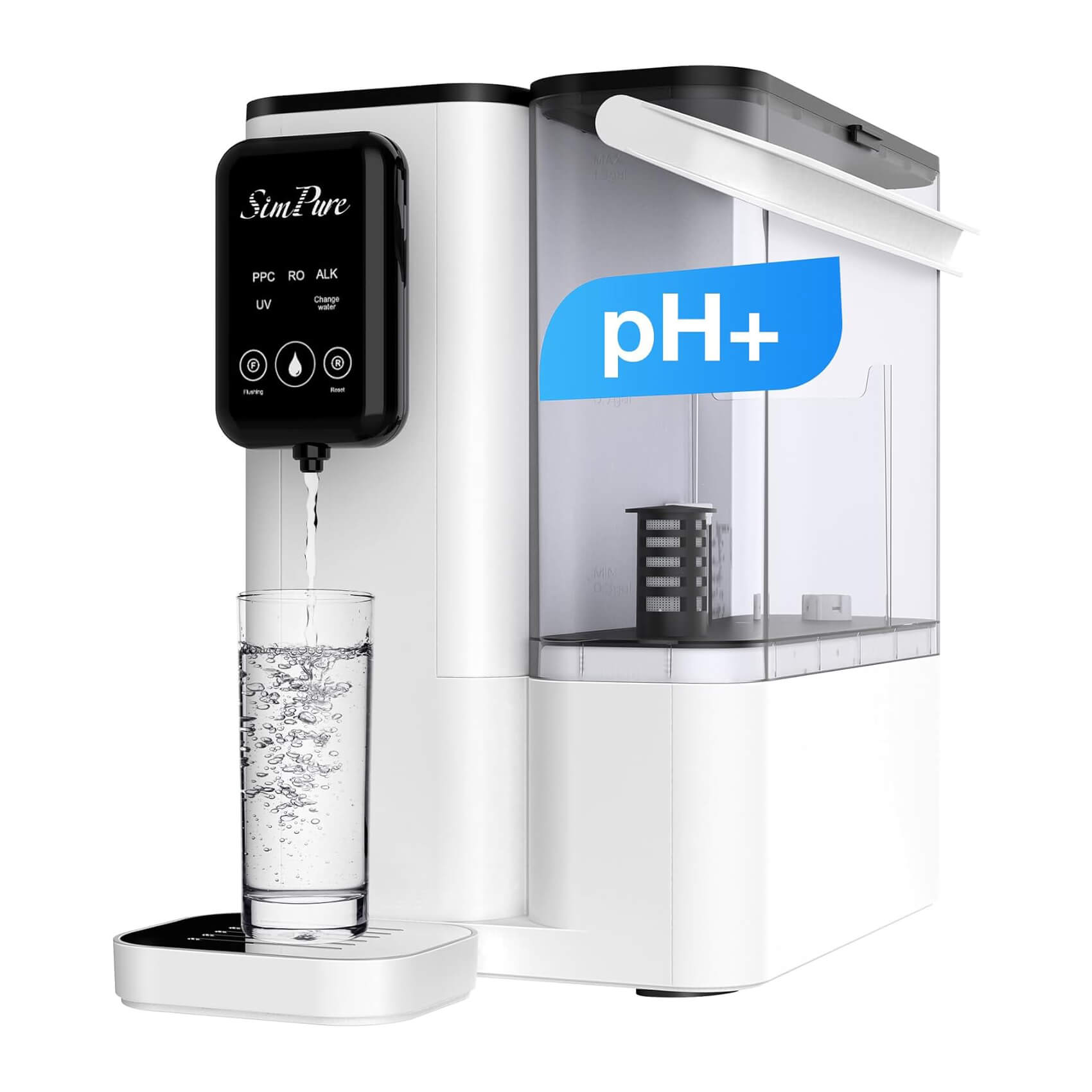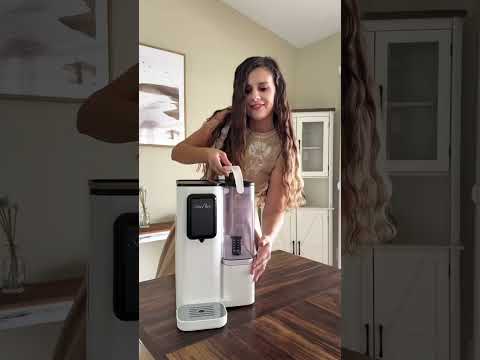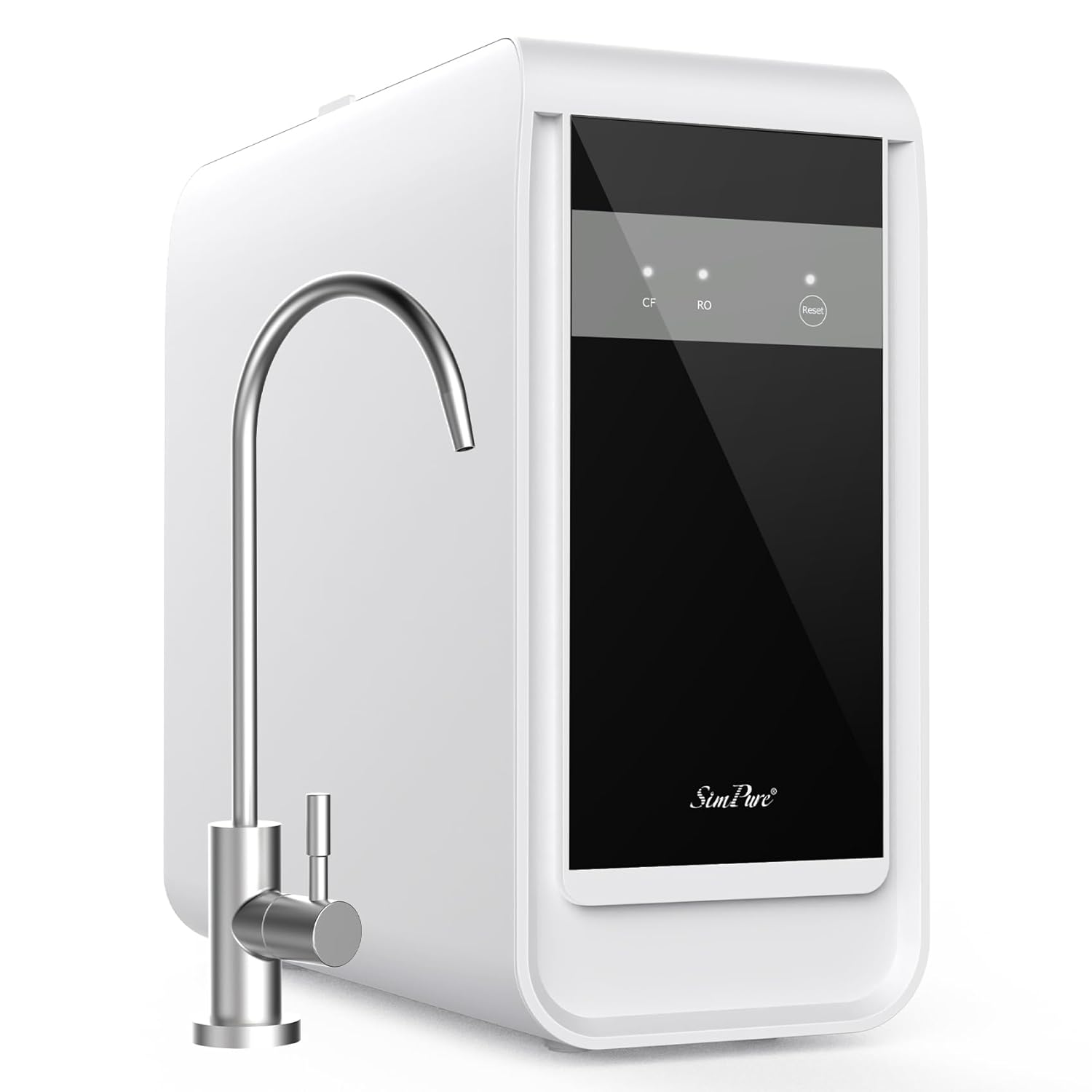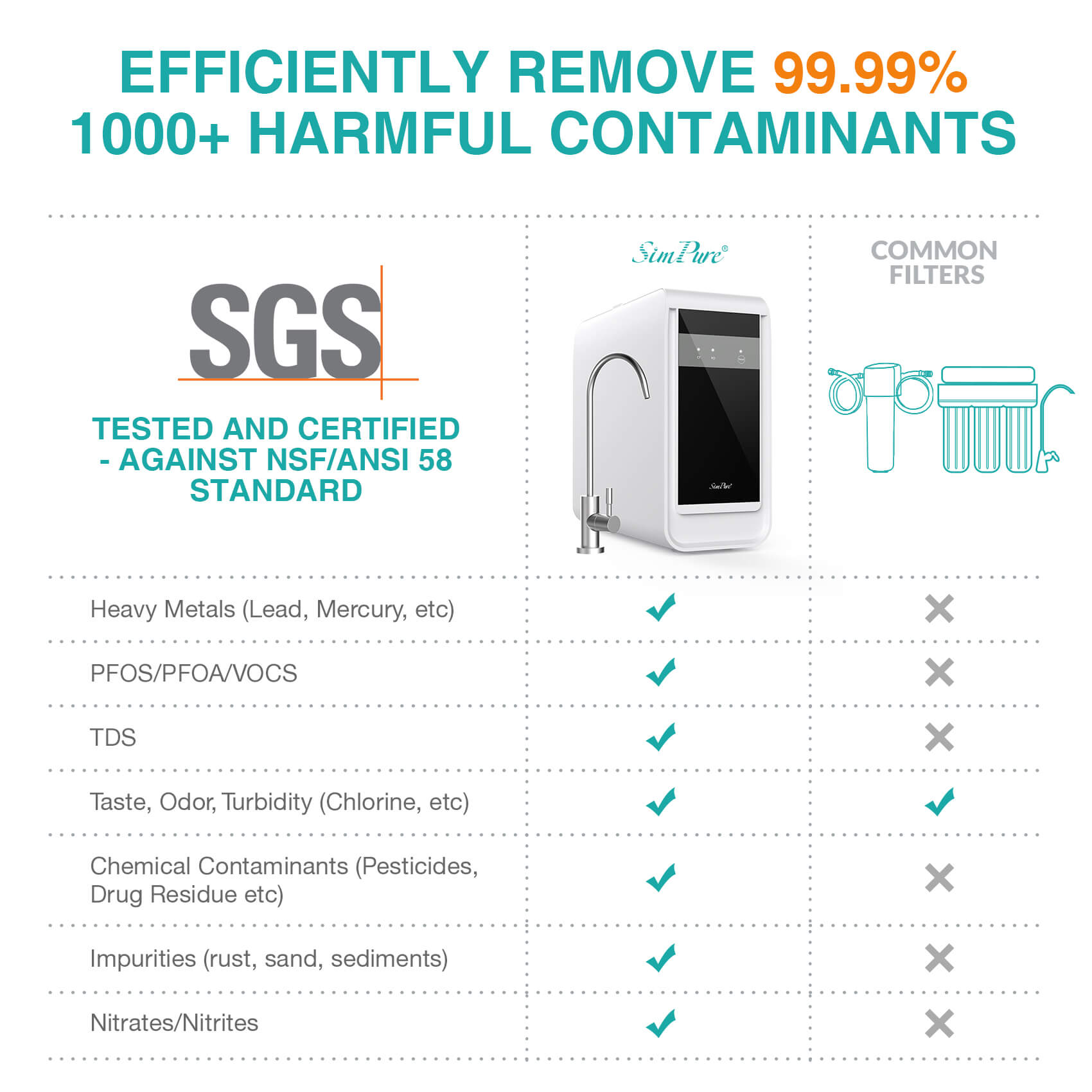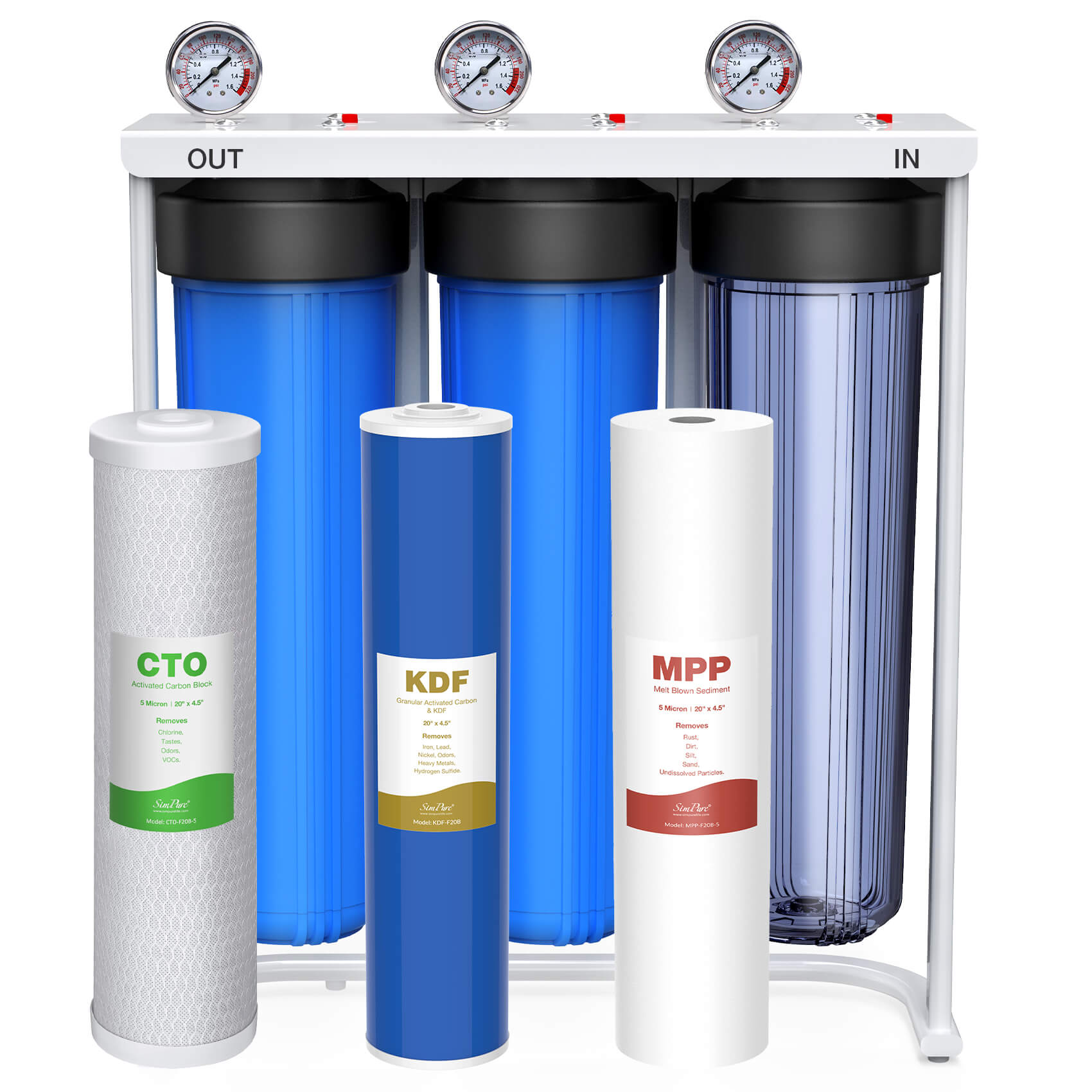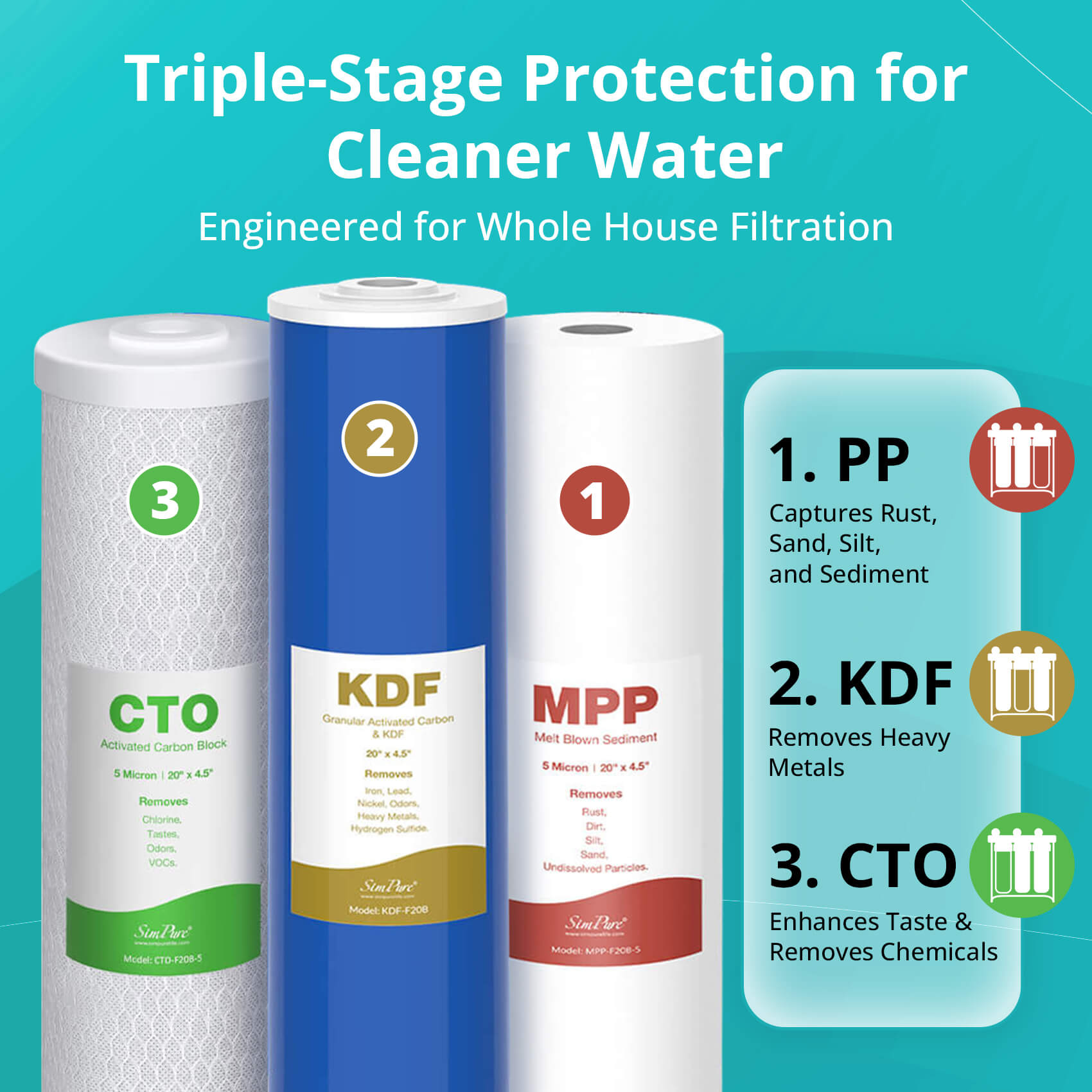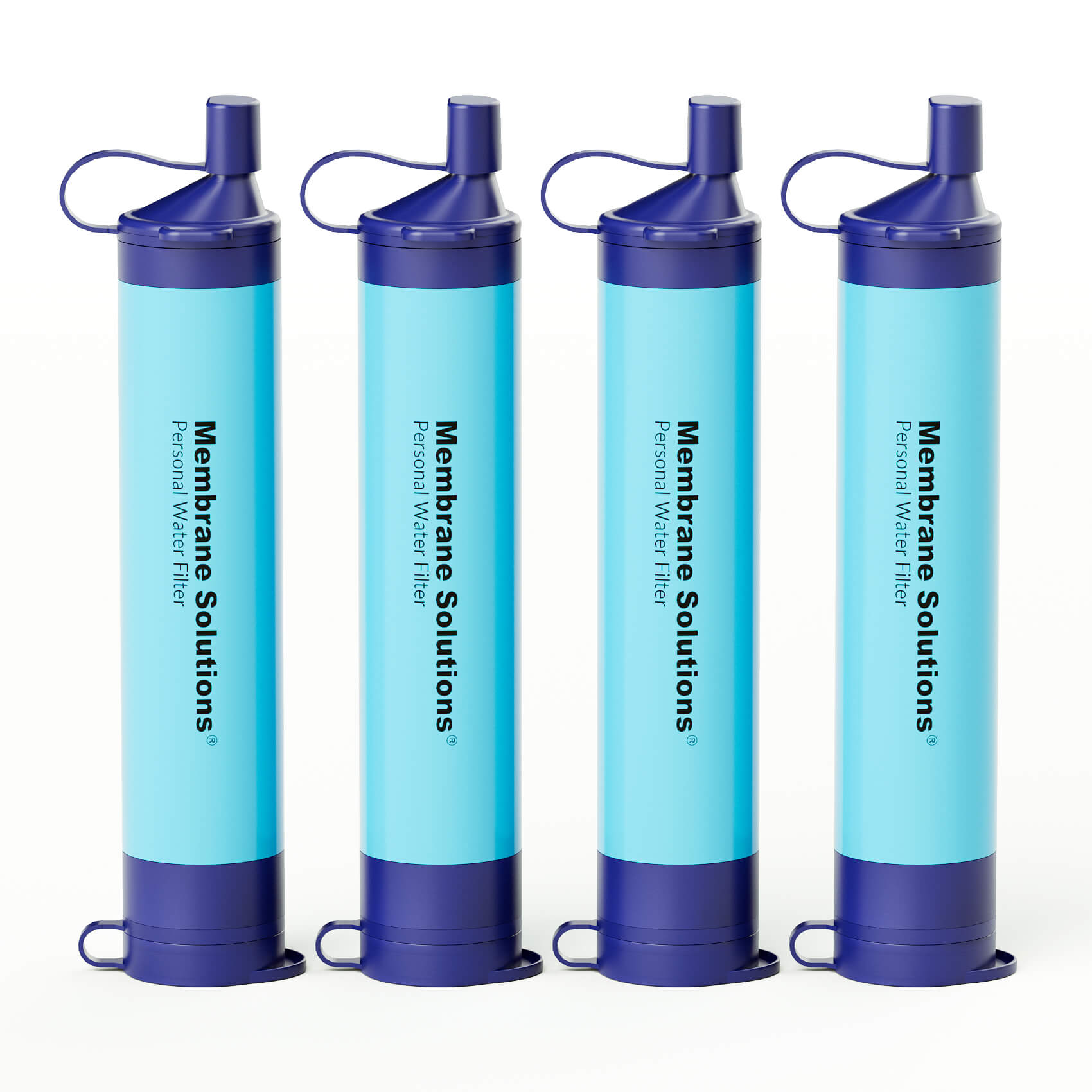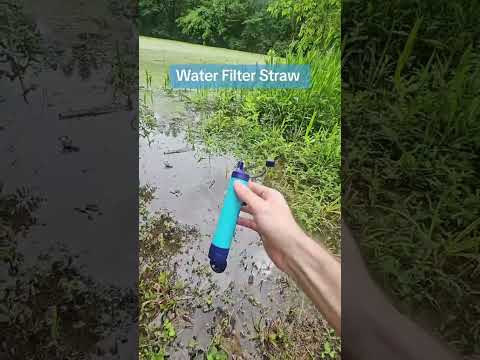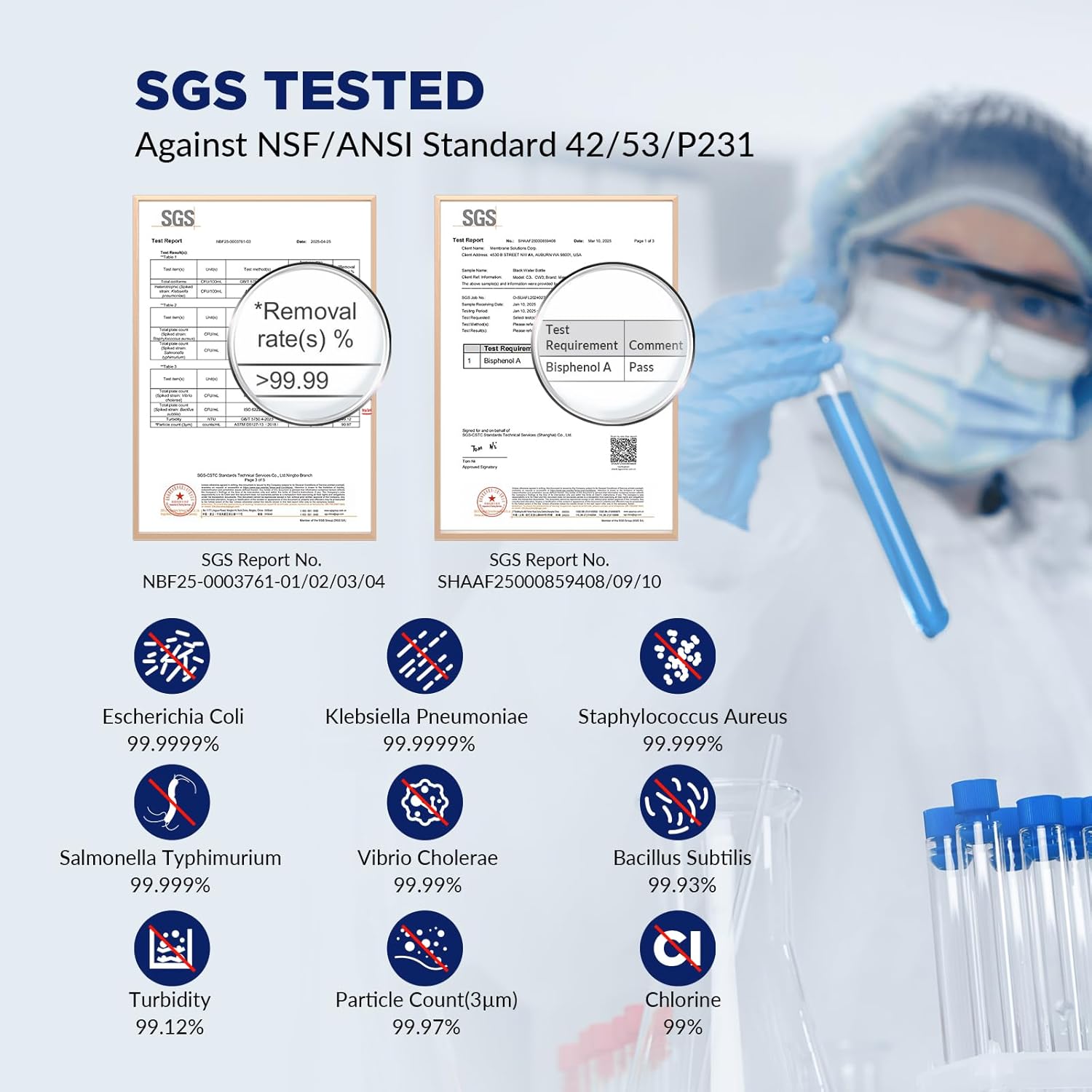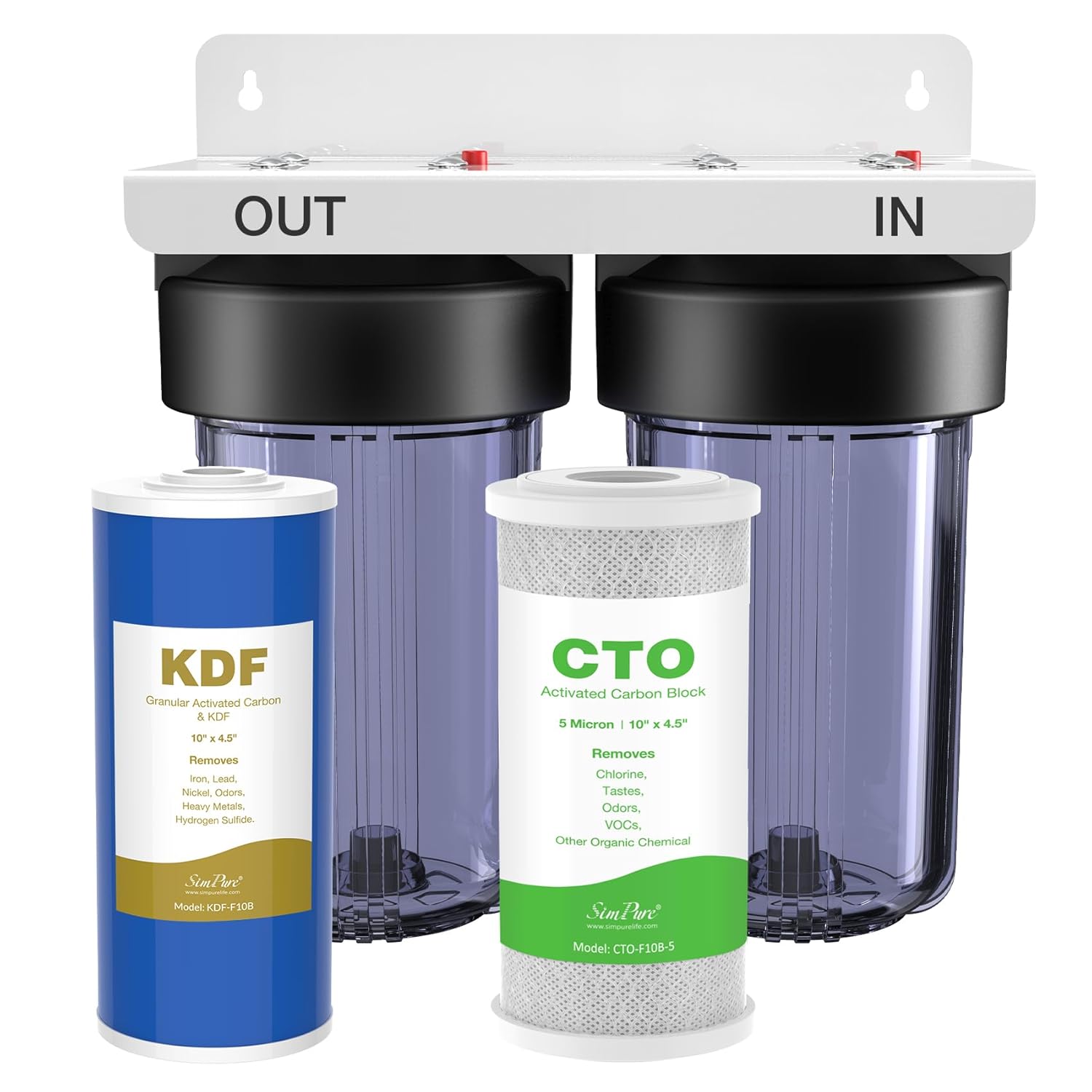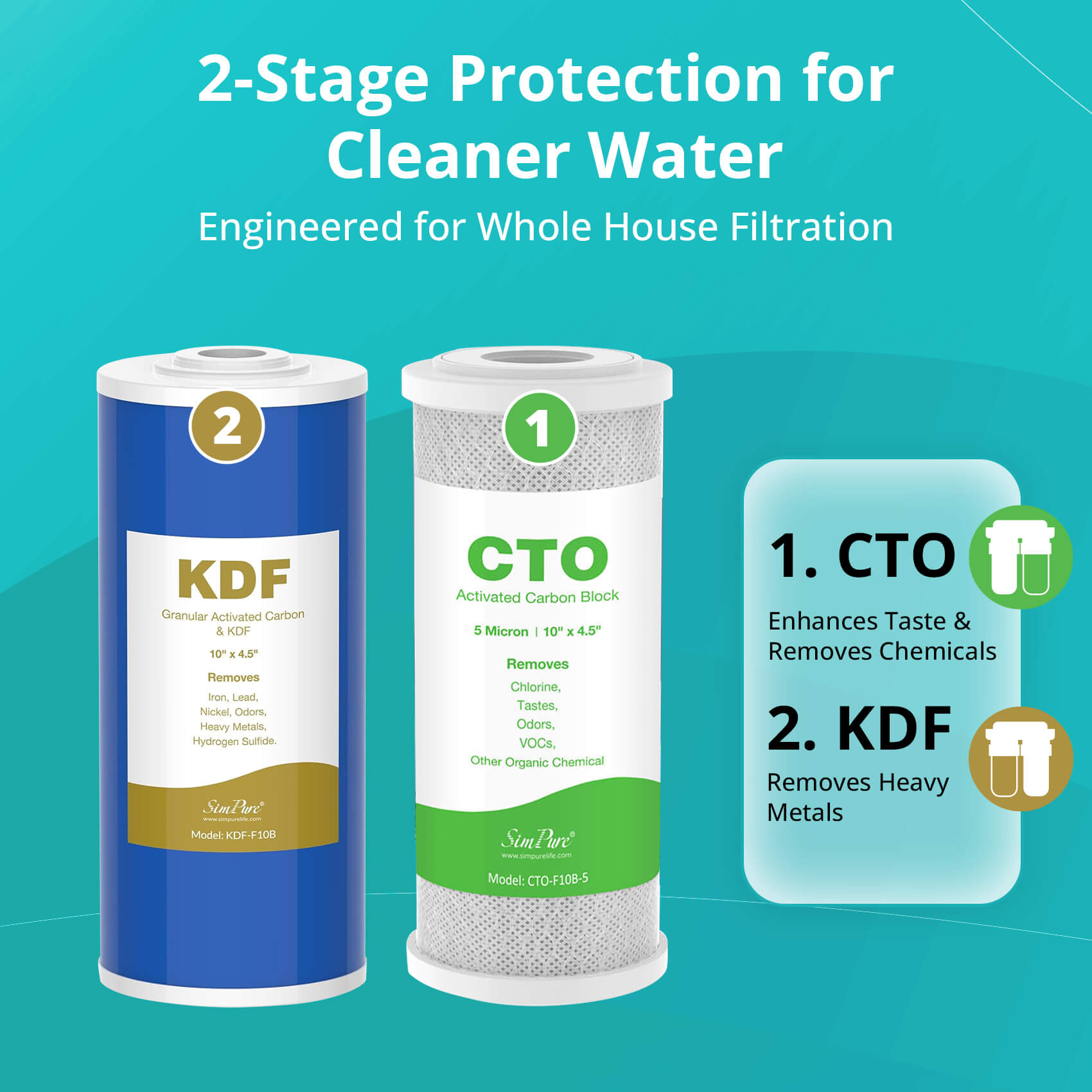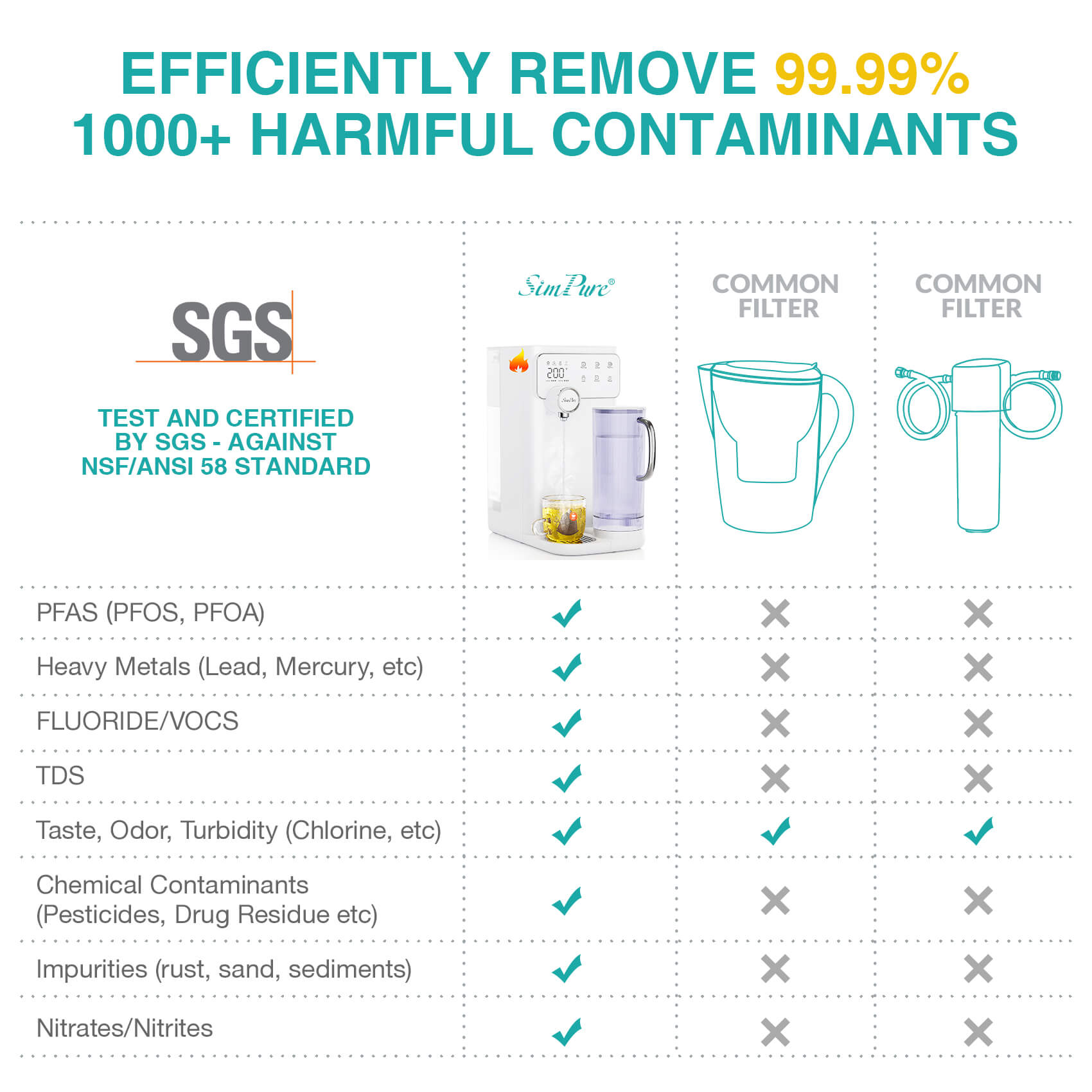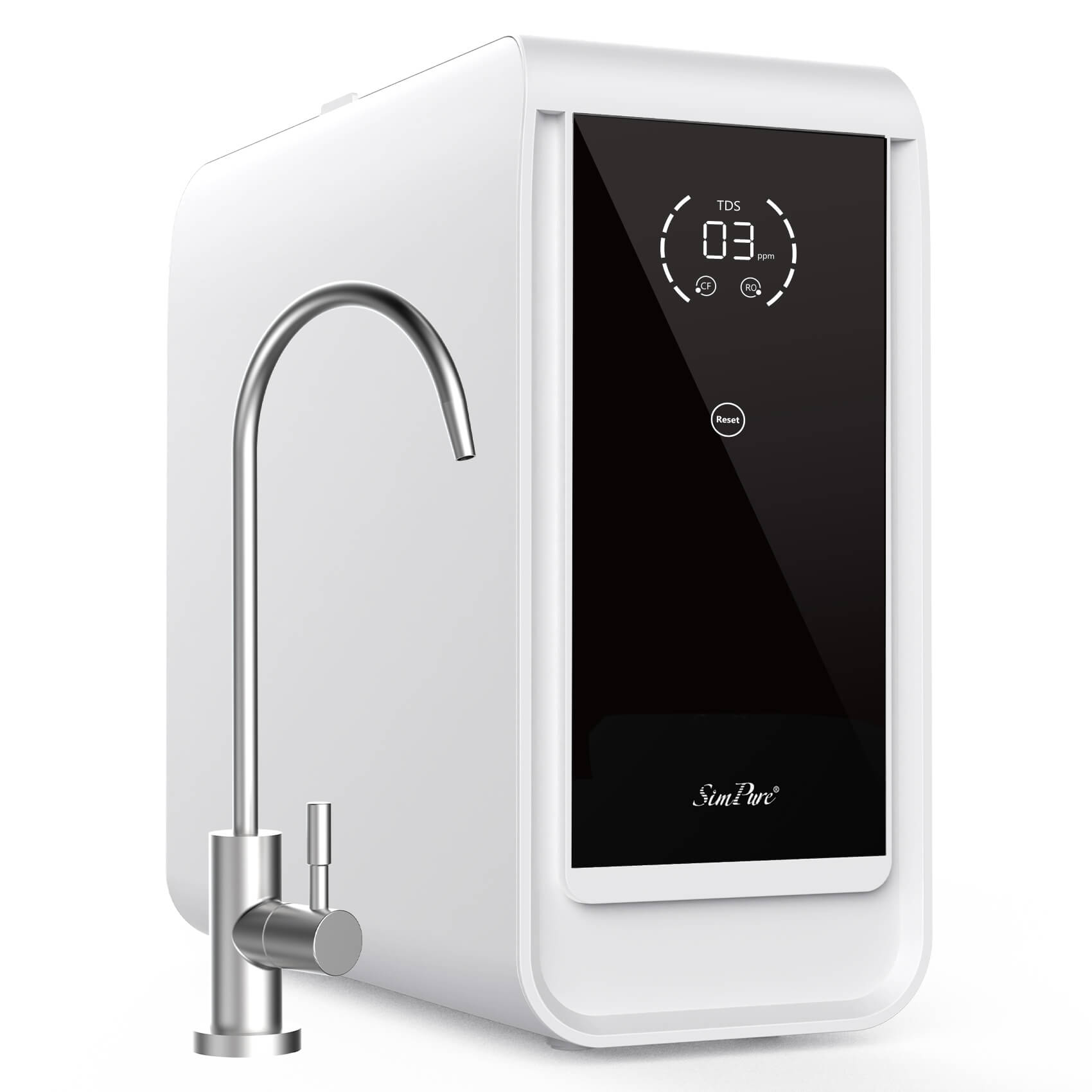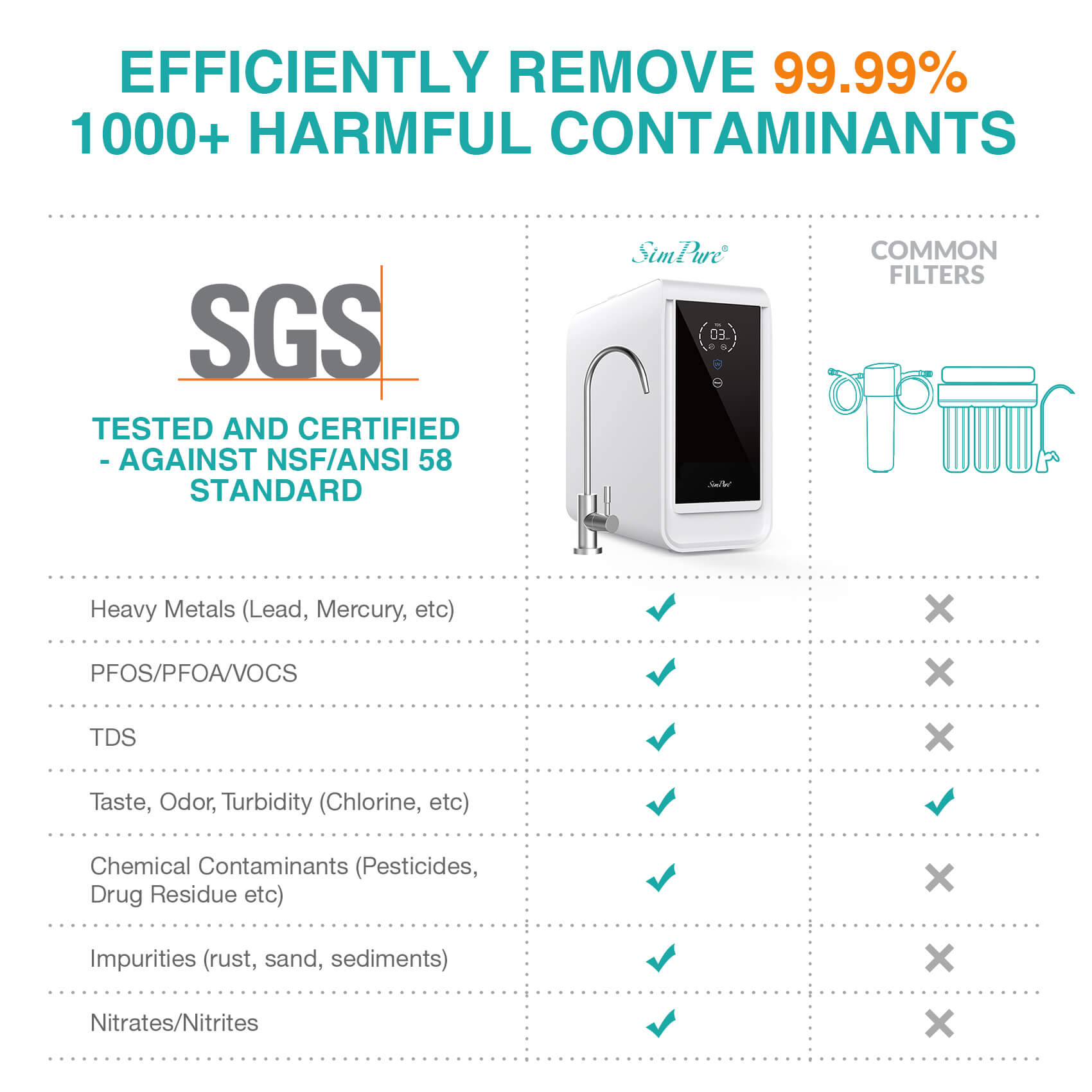How to remove PFAS from water at home? Recently, PFAS pollution becomes more and more serious worldwide. In January, 43 tap water samples from 44 locations in the United States detected PFAS. From this, we can see how serious PFAS pollution is in the United States. PFAS that we mentioned is a very persistent organic pollutant and it is extremely difficult to decompose. What's worse, PFAS can cause lasting damage to humans and the environment. As we all know, having large amounts of PFAS in the body can cause many human diseases. Nowadays, many Americans are concerned about the potential risks that contaminants such as PFAS pose to the household water system. In the following article, you will find a clear answer on how to remove PFAS from water at home.
Why Remove PFAS From Water?
PFASs (perfluorinated alkyl substances) are also called perfluorinated compounds (PFCs) which contain at least one perfluorocarbon atom. PFAS also includes perfluorooctanoic acid (PFOA) and perfluorooctane sulfonate (PFOS). The Stockholm Convention placed the main substances in the PFASs series, PFOS, and PFOA, on the restricted list in 2009 and 2015 respectively. In meantime, various countries and regions have also published restrictions on PFASs in drinking water standards.
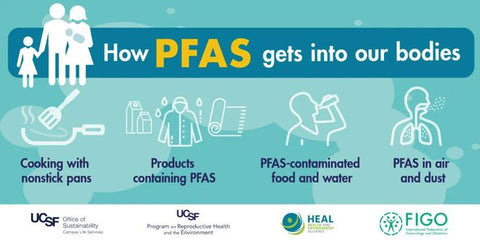
Early in 2007, a study by the U.S. Centers for Disease Control and Prevention shows that PFAS has penetrated water systems in many places. The PFAS chemical can be detected in the blood of 98% of Americans. There are more and more PFAS compounds detected in air, sediment, drinking water, and food. Perfluorinated compounds can enter the body through diet, drinking water, and breathing. PFAS is mainly accumulated in the blood, liver, and kidneys, and can lead to a variety of health hazards, including genetic developmental toxicity, neurotoxicity, male reproductive toxicity, endocrine interference, cardiovascular toxicity, and other multiple toxicities. Existing research has also found an association between PFAS and reduced motor vision in infants, as well as type 2 diabetes in women. This is the main reason that we should remove pfas from water.
3 Ways of How to Remove PFAS From Water
Now that we have a preliminary understanding of the dangers of PFAS, we need to find out how to remove PFAS from water at home. Many governments have already begun to act cautiously to limit the unnecessary use of PFAS. In literature studies, there are several ways to remove or transfer PFAS, but not all are effective, and most are only tested in the laboratory. Whatever, let's take a look at these methods first.
1. By Physical Adsorption to Remove PFAS From Water
According to the related literature, among the various removal methods, the traditional chemical redox method is ineffective against PFASs. Advanced oxidation processes (AOP), electrochemical methods, and membrane filtration have become potentially effective methods for removing PFAS compounds such as advanced oxidation of persulfates, UV exposure, zero-valent metal reduction, and reverse osmosis (RO), and nanofiltration (NF) membranes.
Many researchers have used activated carbon, resins, biomass, carbon nanotubes, etc. to adsorb PFASs. Generally, the adsorption capacity of granular activated carbon (GAC) was 71.6-290 mg PFOS/g and 41.3120 mg PFOA/g, while the powdered activated carbon (PAC) was about 560 mg PFOS/g and 290500 mg PFOA/g. The adsorption capacity of the resin is 2002390 mg PFOS/g and 5251500 mg PFOA/g. Although minerals have adjustable mesoporous or modifiable layered structures, studies have shown that due to the hydrophilic nature of minerals, minerals have limited adsorption capacity to hydrophobic organic matter PFASs, and most minerals are less than 10 mg PFAS/g.
As we mentioned above, membrane filtration such as PFAS water filter has a significant effect on removing PFAS from water. Since the effective diameter of PFASs molecules is about 1 nm, RO membranes and NF membranes can be applied to treat them. Tang et al. studied the removal of PFOS-containing wastewater by RO membrane, and the results showed that the removal rate of PFOS was over 99%. Subsequently, some researchers used membranes to filter PFAS in water, such as PFnA and FOSA. They all have a good PFAS removal rate. Therefore, physical adsorption is considered a promising technology on removal of pfas from water because of its simplicity, economy, and efficiency.
2. Chemical Methods of PFAS Removal in Water
---Ultrasonic irradiation uses acoustic cavitation to apply a sound field to the solution to drive the reaction, thereby effectively degrading PFASs and other contaminants in the water. This method has the advantages of safety, stability, and relatively low energy consumption, and is an advanced method for removing micropollumines in water. However, the optimal decomposition conditions of different substrates are also different, and the control of ultrasonic reaction conditions is more difficult. So far, the use of ultrasonic technology to remove PFAS from water has not been implemented on a large scale.

---Photochemical treatment refers to the environment of PFAS and other pollutants are irradiated by light, after absorbing photons, the pollutant molecules are in a certain excitation state and perfluorinated electrons, polyfluorinated organic compounds are oxidized into small molecule intermediates. Non-toxic and harmless substance. Since Hori et al. successfully degraded PFAS through ultraviolet light in 2004, the method of ultraviolet degradation of PFASs has attracted more and more researchers' attention.
---Electrochemical oxidation treatment has the advantages of strong oxidation ability and low energy consumption, especially for short-chain PFASs removal efficiency. Electrochemical oxidation treatment has become a relatively mature organic pollutant treatment technology developed in recent years. The principle is to make PFASs undergo direct or indirect electrochemical reactions on the electrodes to degrade them into other harmless substances. Electrochemical oxidation treatment can also obtain a good defluorination effect in a short period, and the reaction is highly controllable. However, the reaction conditions are more demanding, and the energy consumption is large. Therefore, this method is only suitable for the treatment of small-scale PFASs wastewater, and it is difficult to apply to the in situ remediations of PFAS-contaminated water bodies.
3. Adopting Biodegradation to the Removal of PFAS
Biodegradation is the process by which organic matter is broken down and converted into other harmless substances under the action of biological or biological enzymes. Microbial size and rapid reproduction are among the most promising PFAS technologies for in situ repair degradation techniques, but the current effect of using biodegradation to remove PFASs is not ideal. Studies have shown that the use of microorganisms to degrade PFAS is controversial. Although PFAS can be broken down by microorganisms, the reaction process is complex and the reaction cycle is long, and the intermediate products produced by degradation are still toxic.
How to Remove PFAS From Water at Home?
Above are some of the methods we have on how to remove PFAS from water, but not all of them work for us families to remove PFASs. So how to remove PFAS from water at home? In the article, we mentioned that membrane filtration has a significant effect on the removal of PFAS from water. So, being the highest precision membrane, does reverse osmosis remove PFAS?
Totally! Concluded from the previous research, the RO water filtration systems have a PFAS removal rate greater than 90%, including the removal of short-chain PFAS. According to Speth, RO technology is best suited as a point of use technology for a homeowner, since the volume of treated water is smaller and the waste stream can be disposed of more easily. Here we recommend 2 reverse osmosis system water purifiers with the RO membrane filtration precision of 0.0001 microns for you to solve the problem of how to remove pfas from water.
Countertop Style: SimPure Y7P countertop reverse osmosis water filter dispenser is effective in removing PFAS from water at home.
Under Sink Design: SimPure T1-400 tankless reverse osmosis system is also effective in removal of PFAS from water and without a tank.




